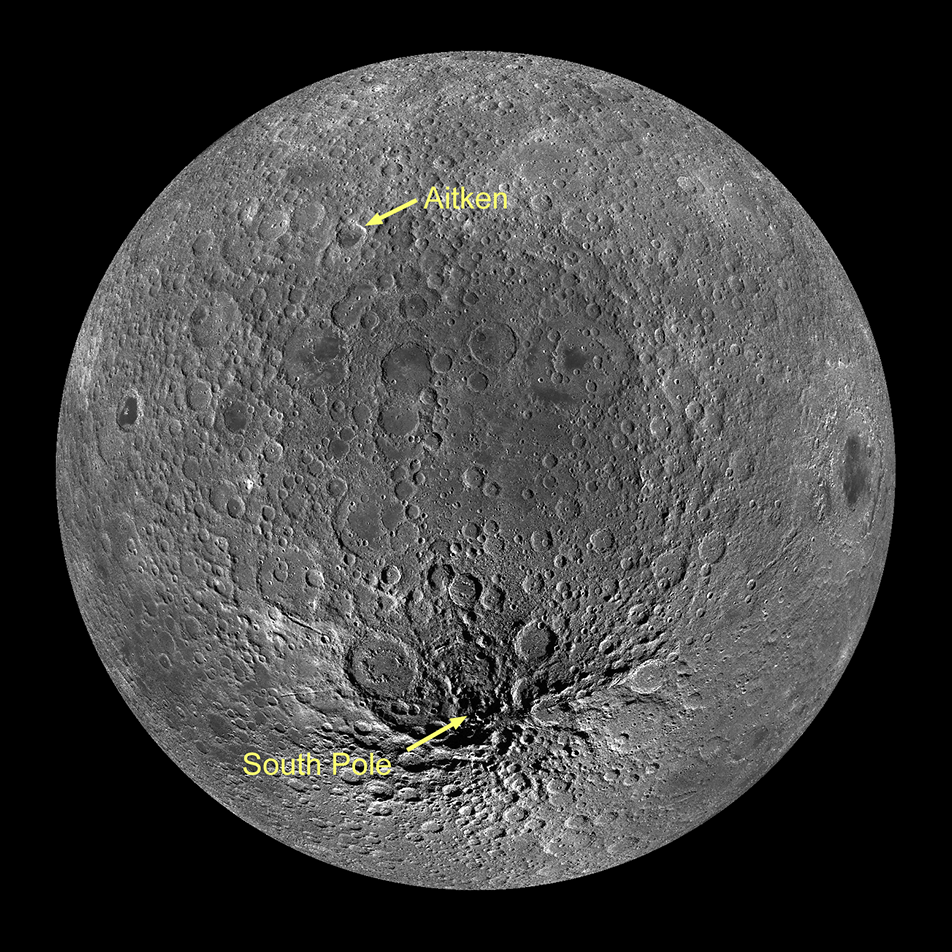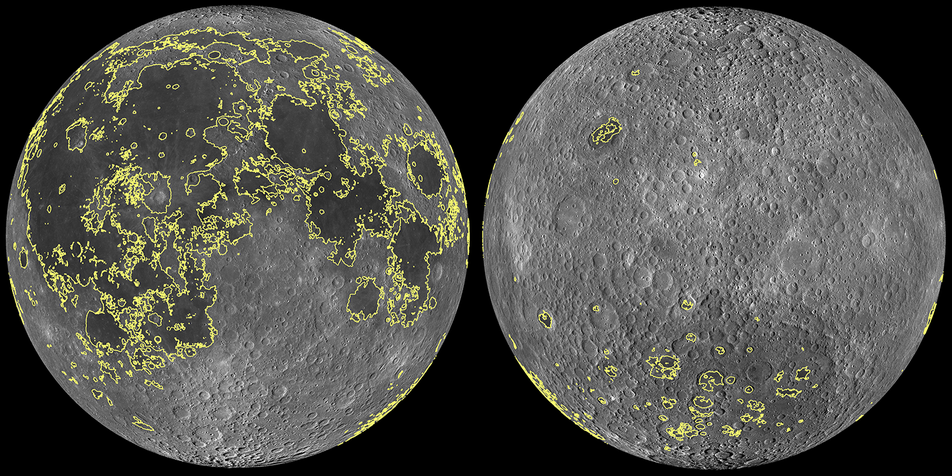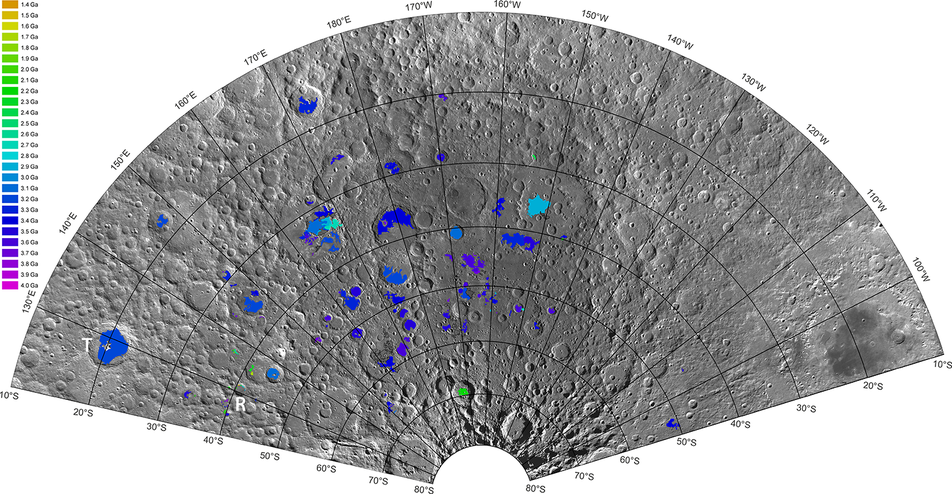
The formation and evolution of the Moon has interested scientists for many decades, and is crucial for understanding the evolution of our planet and the Solar System in general. A major key to understanding the overall volcanic evolution of the Moon lies in the small mare basalt deposits found in the South Pole–Aitken (SPA) basin. For still unknown reasons, the near and farsides of the Moon are very different. The nearside has a relatively thin crust (around 10–40 km) and is dominated by mare basalts, volcanic deposits that flooded many low-lying regions. The farside has a generally thicker crust (>40 km), and has only isolated mare deposits within large craters and basins, such as the SPA and Moscoviense basins and Tsiolkovskiy crater. One idea for the contrast between the volcanic histories of the near and far sides is their crustal thickness difference: thin crust is thought to favor the ascent and eruption of magma, while a thick crust makes it more difficult for magma to reach the surface. However, the story of the SPA basin shows that the answer cannot be that simple.

With a diameter of >2200 km, the SPA basin is the largest observed impact structure on the Moon, and thus the impact event that created this basin may have penetrated through the entire crust. However, compared to the large nearside basins like Imbrium and Serenitatis, whose floors were nearly completely flooded by mare basalts, only 3–4% of the SPA basin floor is covered with these volcanic deposits. So on the one hand, the SPA basin is the type example illustrating the differences in volcanic activity of the near- and farside, but on the other hand it also contradicts the hypothesis that the large differences in volcanic activity between the near- and farside are caused by a difference in crustal thickness. If the only controlling factor were crustal thickness, because the SPA impact event is thought to have removed most of the crust within the basin, one would expect more and longer lasting volcanic activity within the basin than within smaller basins on the lunar nearside. To get a better understanding of the duration of volacanic activity within SPA, members of the LROC team dated all mare basalts in and around the basin by counting craters. This technique connects the impact crater density of the surface to its absolute model age (AMA). The more craters found on a surface, the longer it has been exposed to impacting meteoroids, asteroids, and comets. With the help of samples from the lunar surface collected by the Apollo missions, the crater density of a certain area can be related to radiometric ages to estimate the absolute age of the surface.

The derived AMAs for the SPA mare basalts range from 2.2 to 3.7 billion years, with a major peak of volcanic activity between 3.6 and 3.2 billion years ago. These AMAs are generally similar to those of the nearside and the rest of the farside. However, for both sides a second smaller peak of volcanic activity can be observed around 2.2–2.5 billion years ago, and the youngest mare basalts on the nearside are ~ 1 billion years younger than those of the SPA basin.

Correlating crustal thicknesses with the AMAs also does not show a significant trend towards younger volcanism in areas with thinner crust. Thus, the thickness of the crust cannot explain the lesser volcanic activity and its early cessation within the SPA basin. Possible explanations for this discrepancy might be the lower abundance of heat-producing elements in the mantle beneath the SPA basin compared to the nearside, faster cooling of the mantle below the basin due to the thin crust, and the absence of a mega-basin on the nearside that could have caused weaknesses in the crust at its antipode, like the SPA basin may have done for the nearside.
How can we ever come to conclusion on the these big picture problems? Collecting a suite of well documeneted samples from key areas on the farside and nearside is the solution. Numerous exciting proposals have been submitted for an SPA sample return mission over the past decade, maybe one will be picked for flight status soon!
A more detailed look on the mare basalts in and around the SPA basin can be found in:
Pasckert, J.H., Hiesinger, H., and van der Bogert, C.H., 2018. Lunar Farside Volcanism in and around the South Pole-Aitken Basin, Icarus, 299, 538-562, https://doi.org/10.1016/j.icarus.2017.07.023
Related featured images:
The Moon's Largest Impact Basin
Apollo Basin: Mare in a Sea of Highlands
Aitken Central Peak, Seen Obliquely
Published by Brett Denevi on 2 November 2017